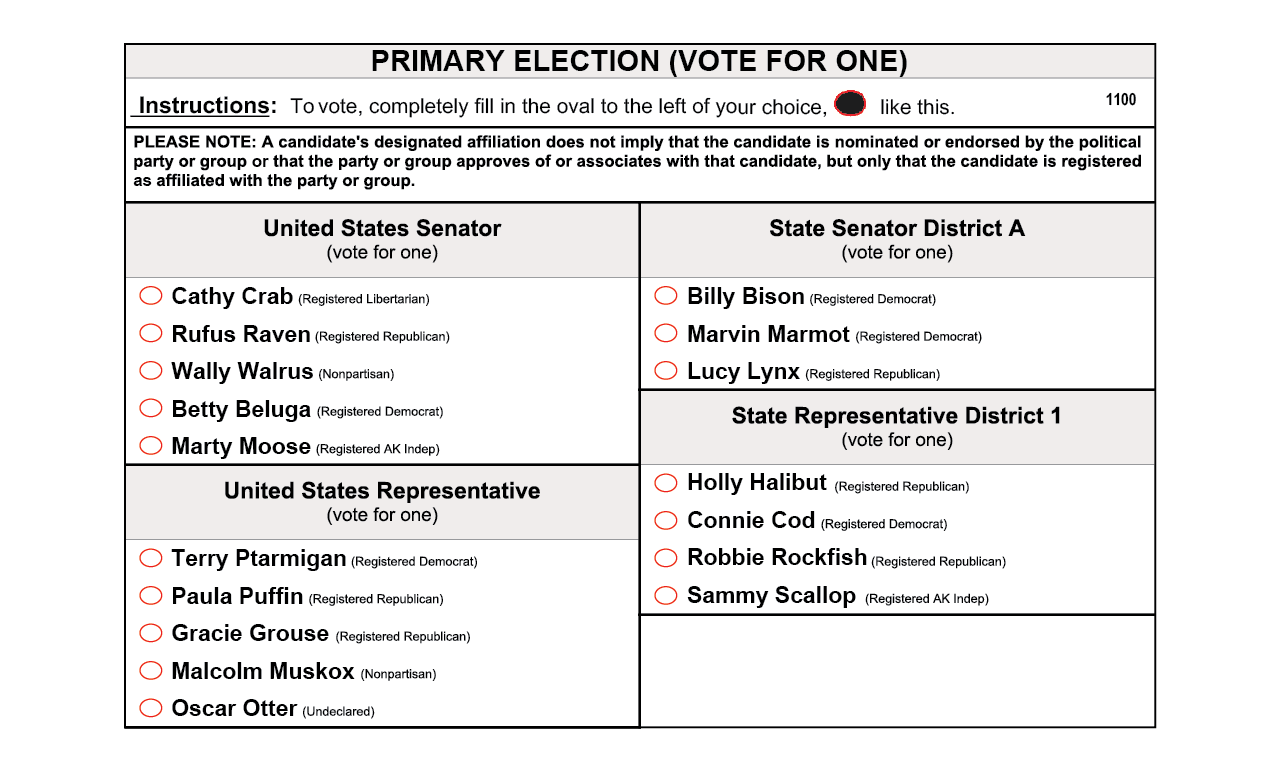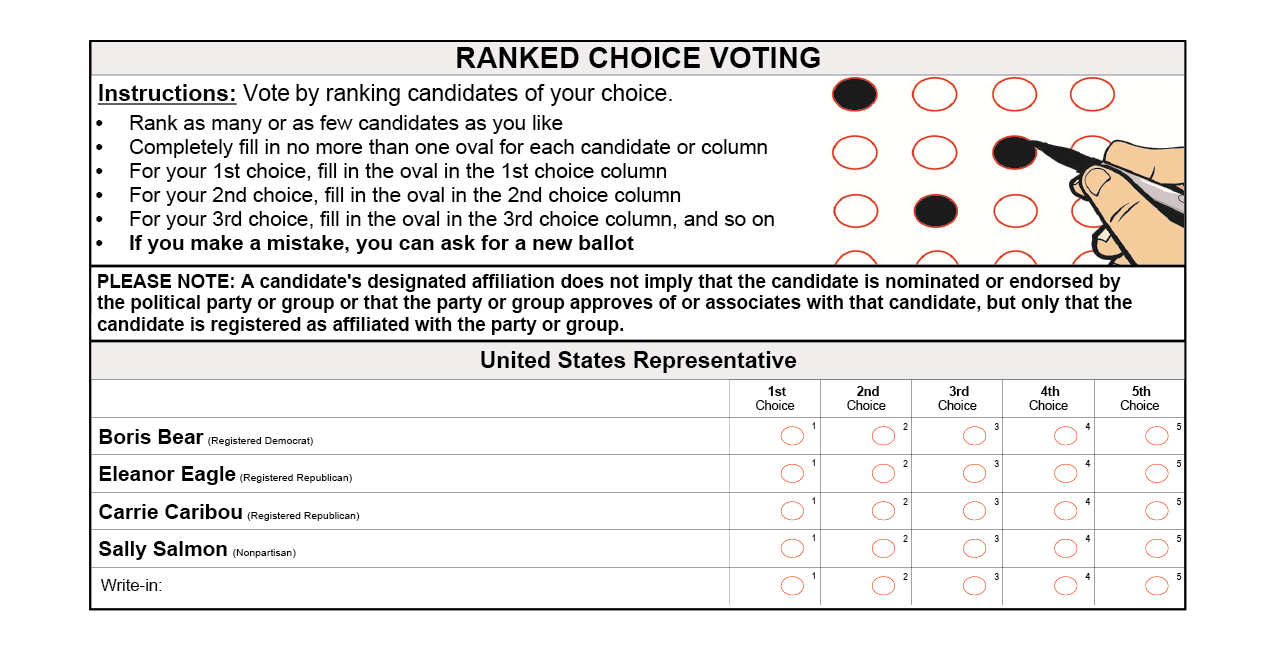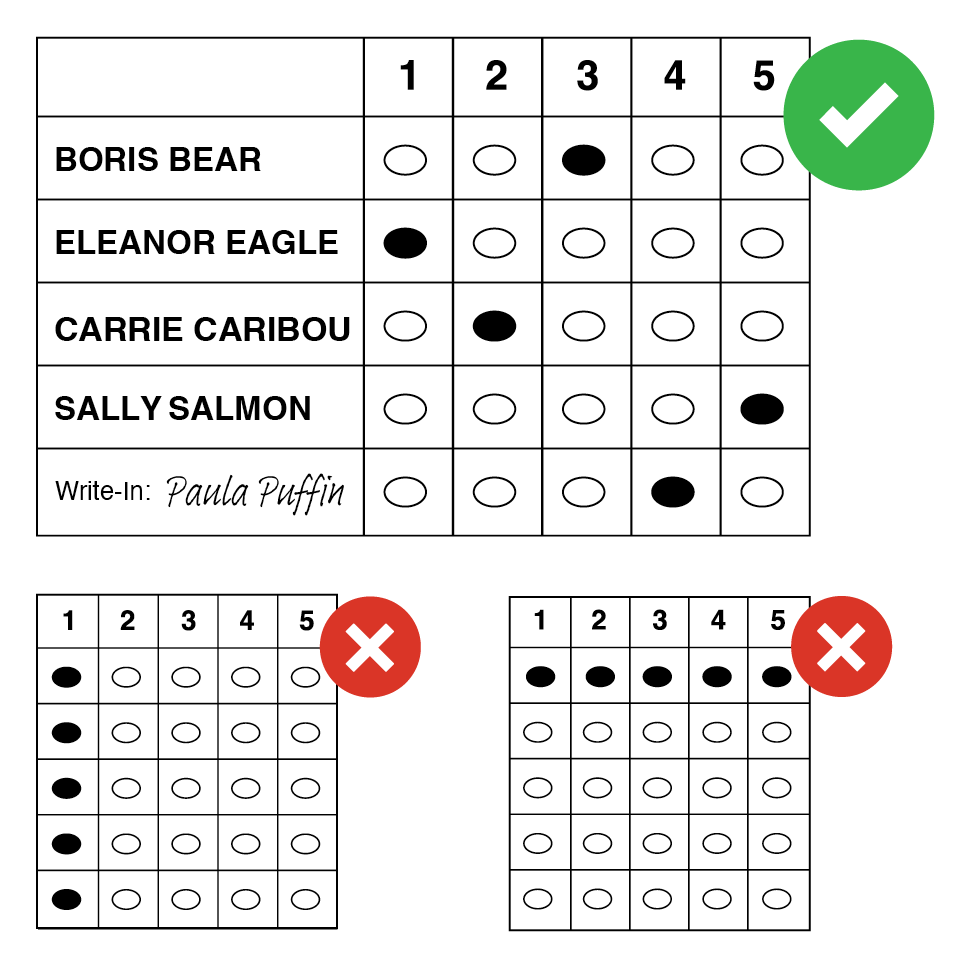2022 Statewide Elections Overview
All statewide elections in Alaska follow the same two-step process: a nonpartisan "pick one" primary followed by a ranked choice voting general election.
- On August 16, 2022, more than 30% of Alaskan voters participated in Alaska's first ranked choice voting election - the special election to fill the U.S. Representative seat vacancy (until January 3, 2023) - as well as the regularly scheduled nonpartisan primary to pick candidates for the November general election.
- On November 8, 2022, Alaskans used ranked choice voting in the general election for US Senate, US House, Governor/Lt. Governor, and the Alaska State Legislature for the next terms.
- Unofficial Election Results are available on the Division of Elections website. Only 1st-choice results will be available until all eligible absentee ballots are received - 15 days after Election Day. Once these ballots have been received and determined to be eligible, they will be included with the unofficial results. Then the Division of Elections will identify the races where no candidate received 50%+1 of the vote, and those will move to tabulation.
How does the pick 1 primary work?
The primary election is an open, pick 1 primary. All candidates for each office are on the same ballot, regardless of political affiliation. You don’t have to choose a ballot – all voters get the same ballot and may vote for one candidate per race. The top four vote-getters advance to the general election.

How does ranked choice voting work?
- Rank the candidates you like in order of preference.
- Your favorite is your 1st choice.
- Ranking other candidates doesn’t affect your 1st choice.
- Ranking multiple candidates ensures you have a voice in the final outcome, even if your first choice isn’t the winner.
- If there’s a candidate you don’t want to see elected, the best way to prevent them from winning is by ranking every other candidate.
How are votes counted in the new ranked choice system?
- If a candidate receives a majority of 1st choice votes (50%+1), they win.
- If no candidate receives a majority, the candidate with the fewest votes is eliminated and voters that ranked the candidate as their 1st choice have their vote counted for their next choice. This process continues until one candidate receives a majority of votes.
- Alaska State law allows up to 15 days for an absentee ballot to be received after Election Day, ensuring voters from Rural Alaska and overseas have their voices heard. In order to allow each vote to be counted before the next round, only first-round results will be reported for the first 15 days following an election.



